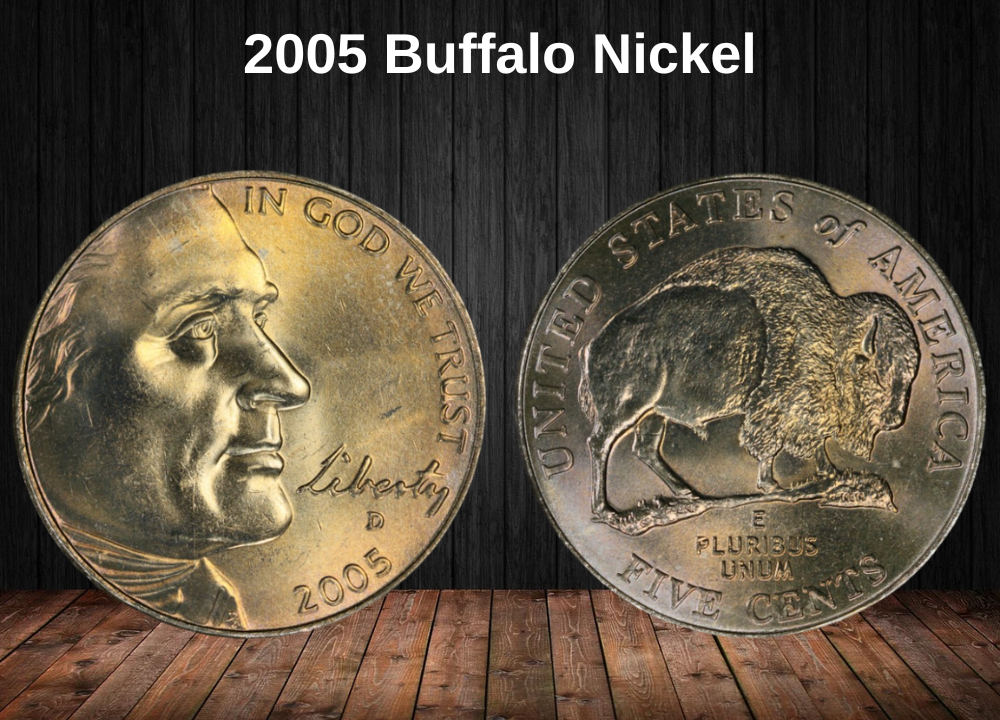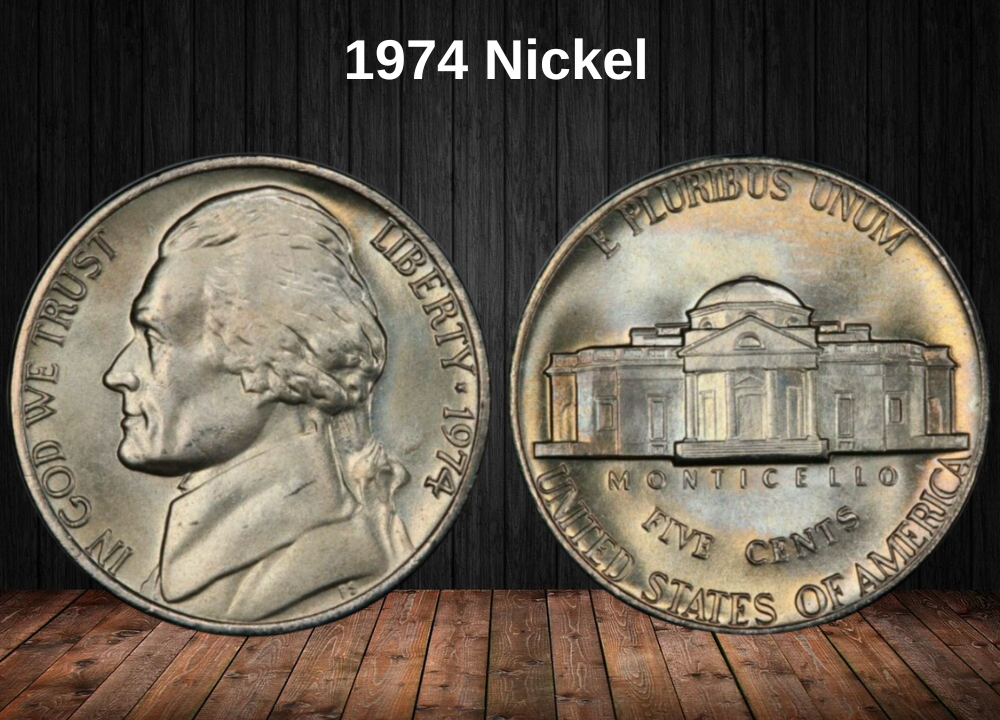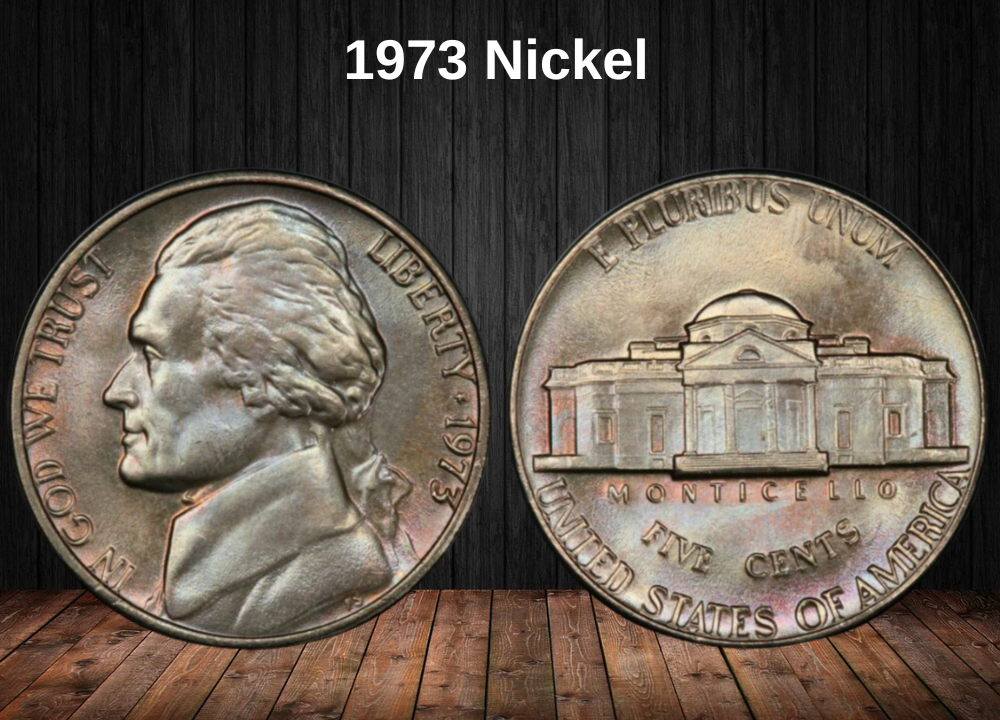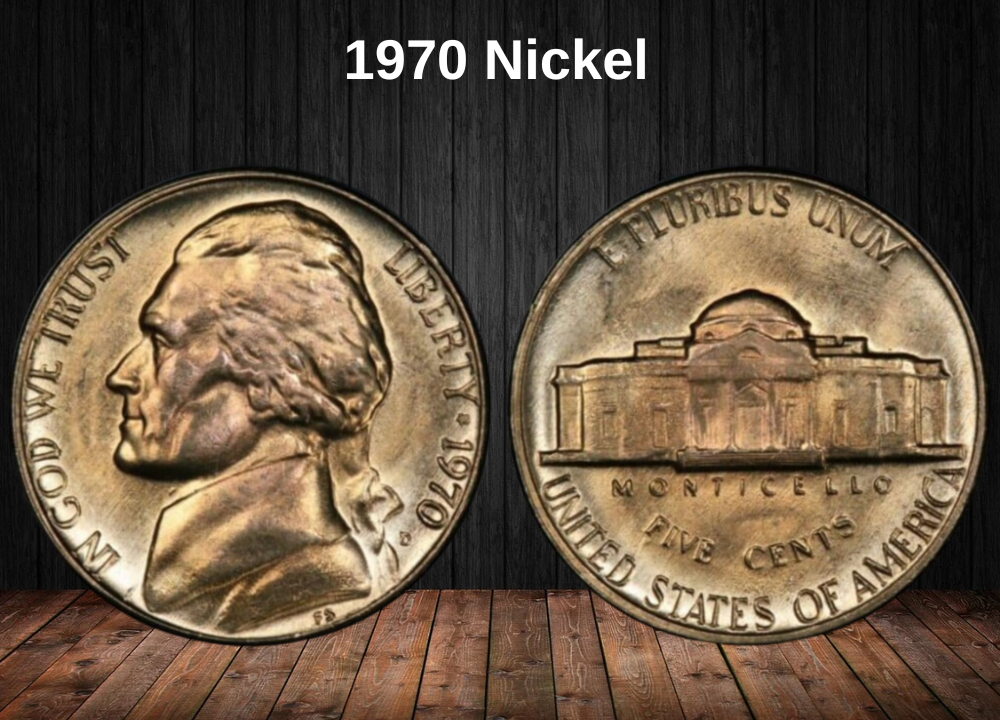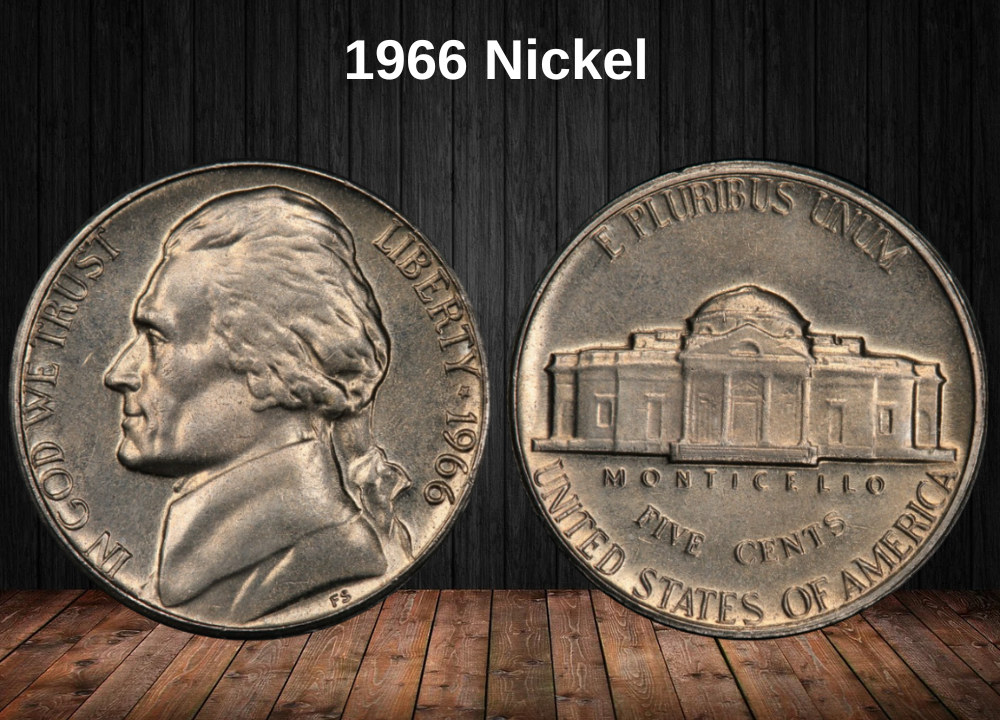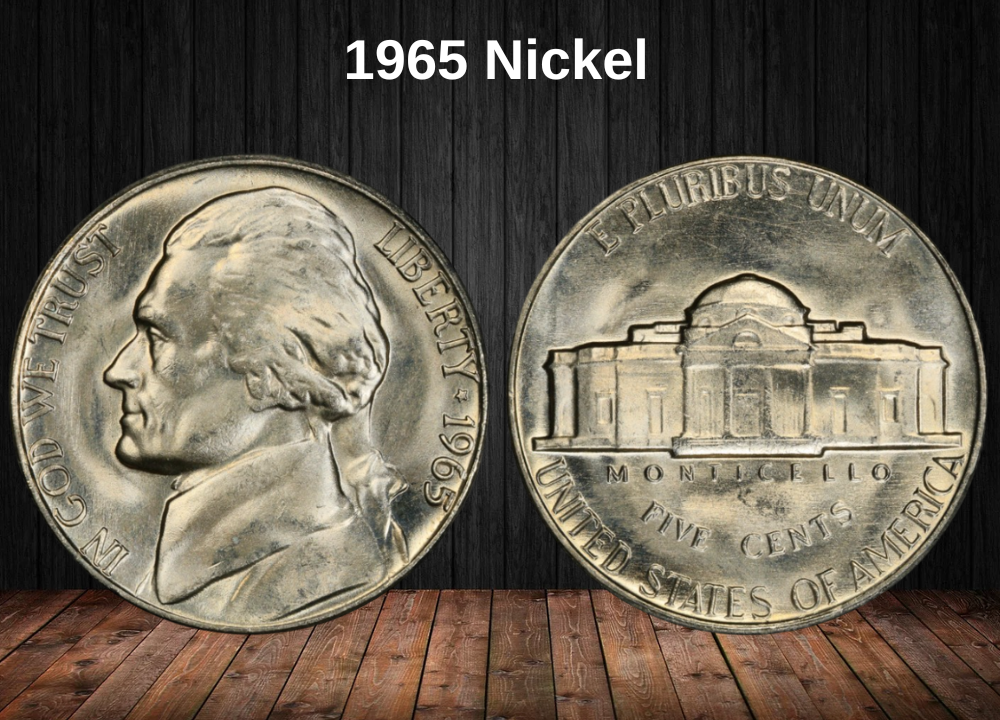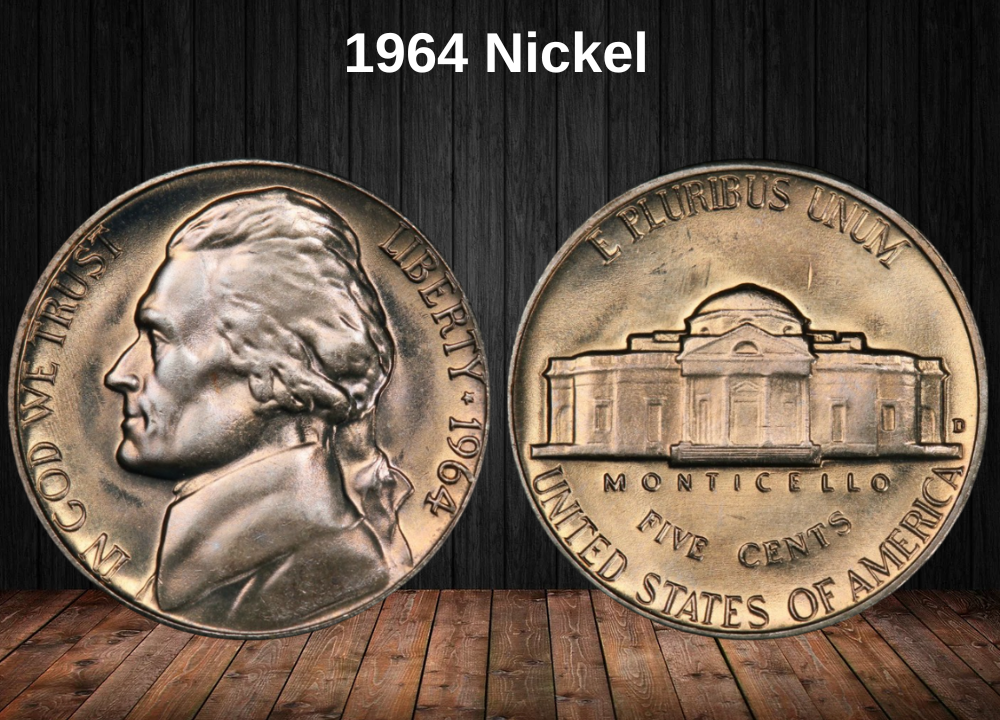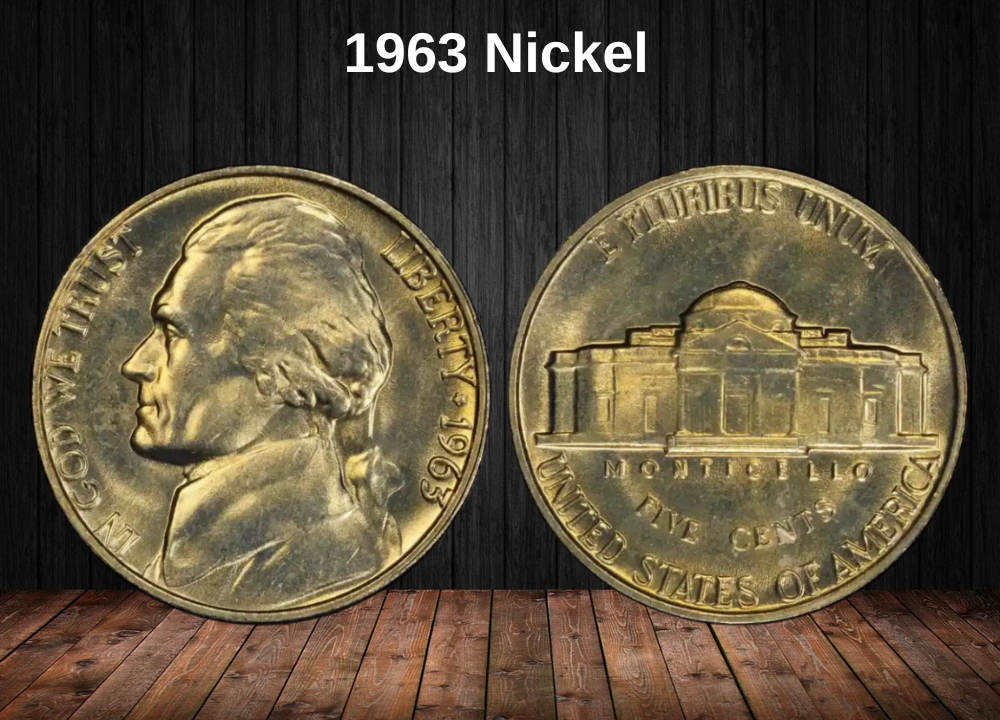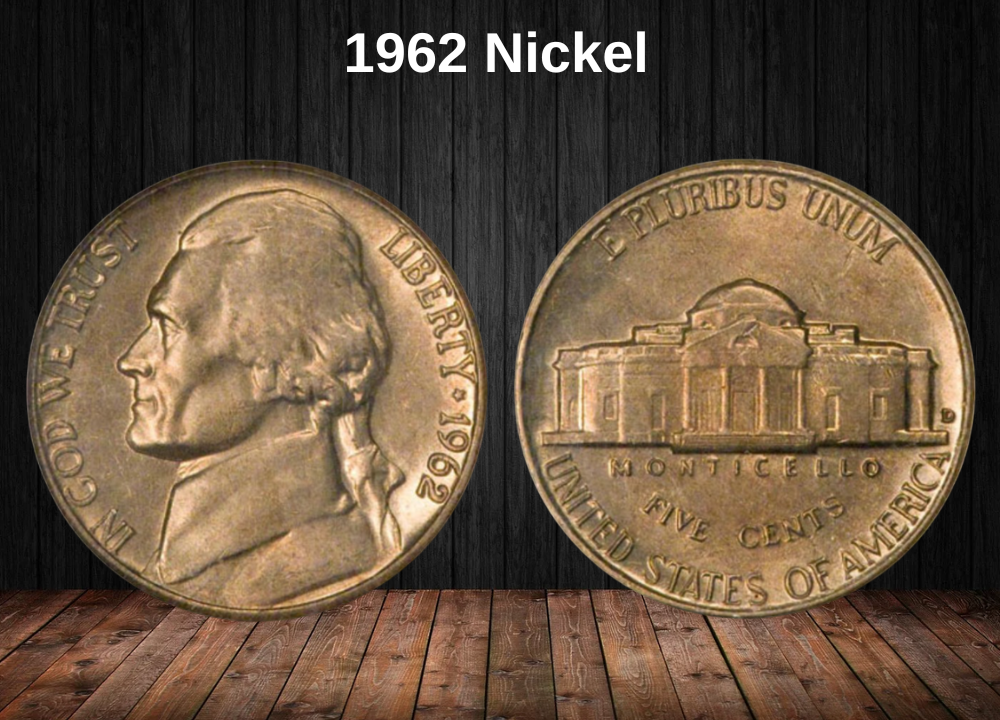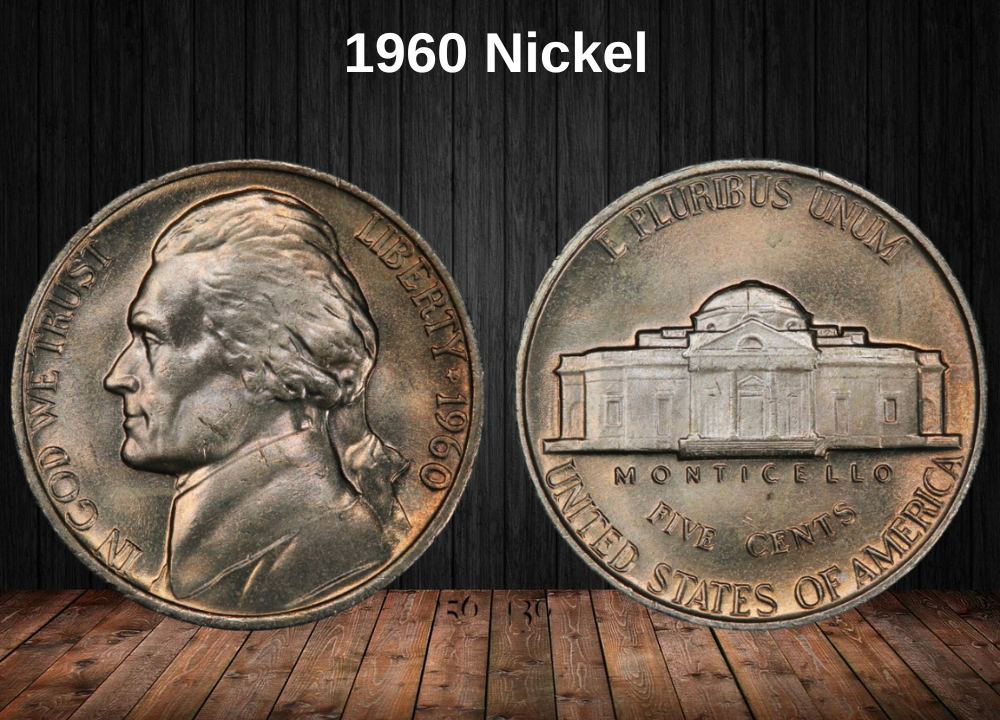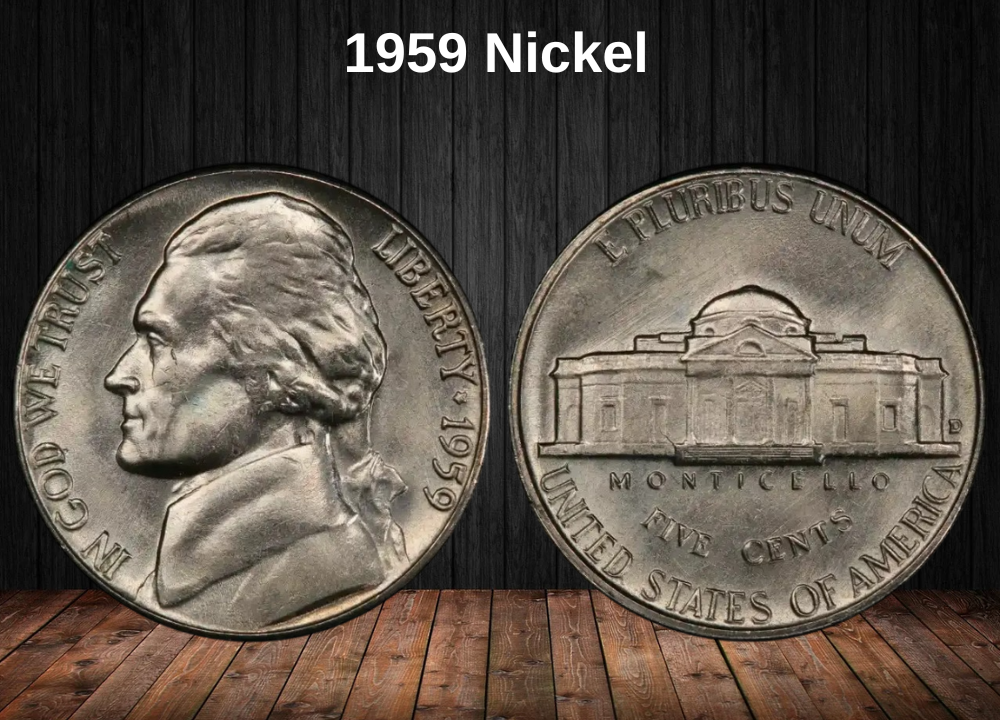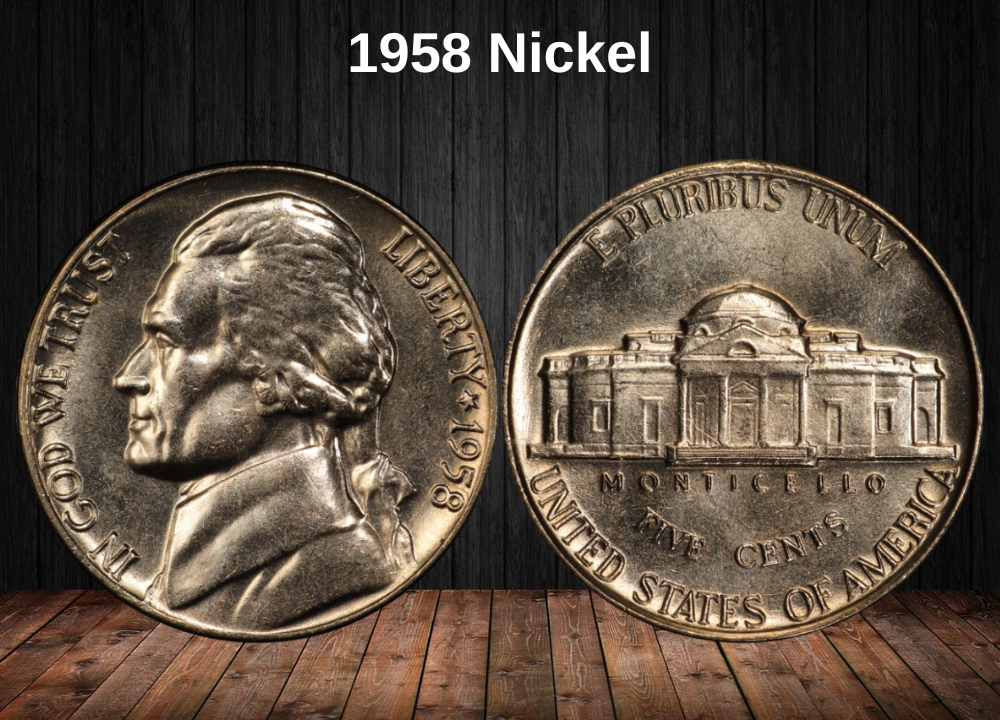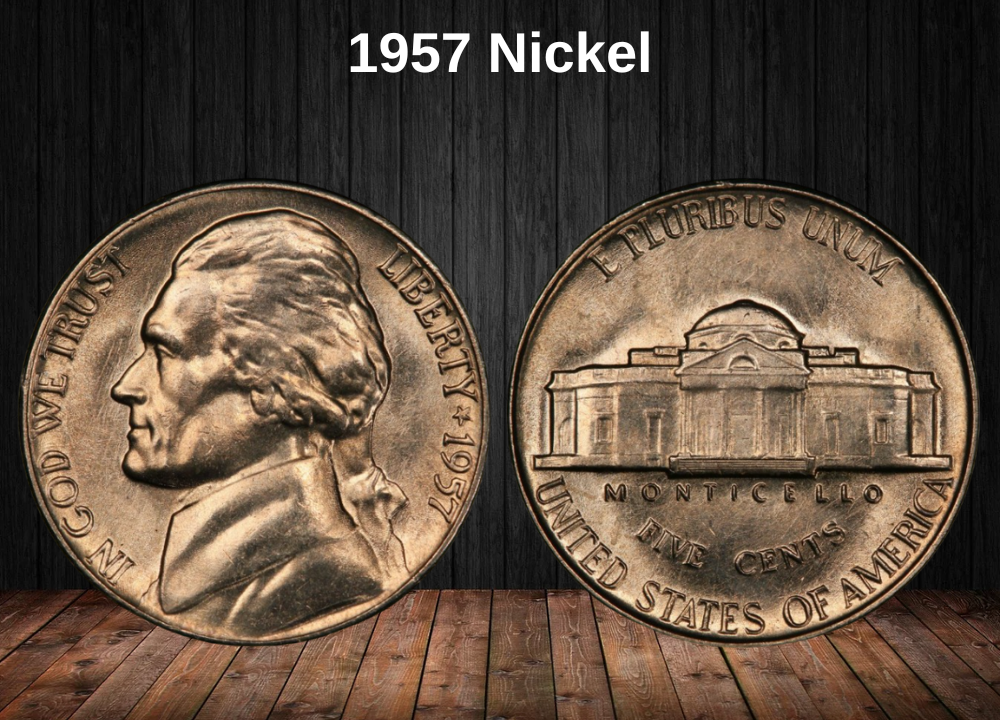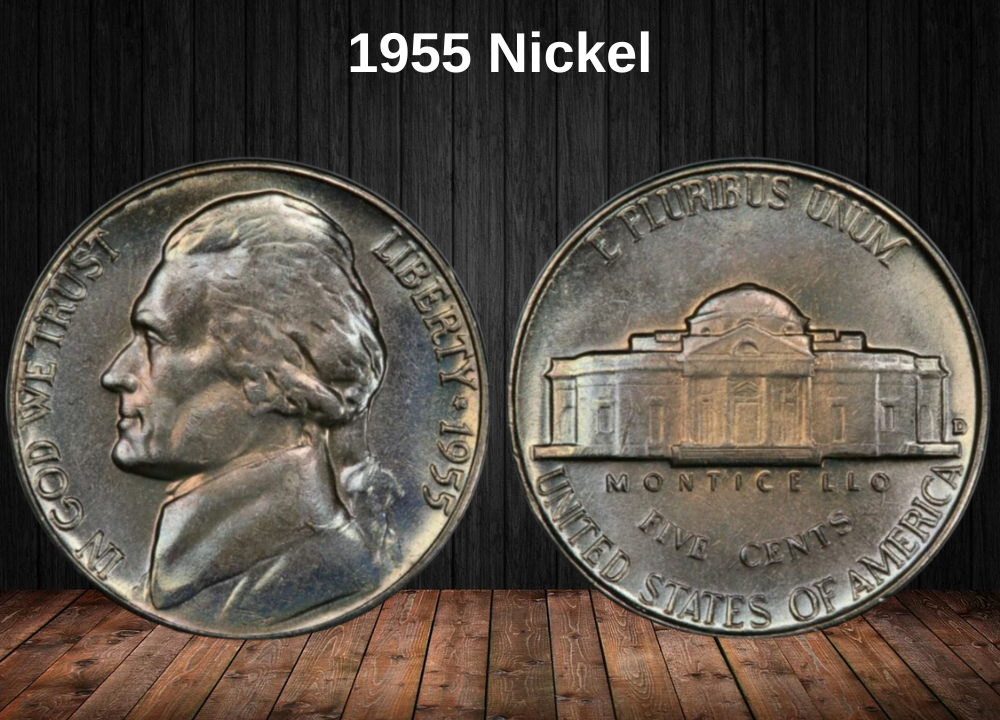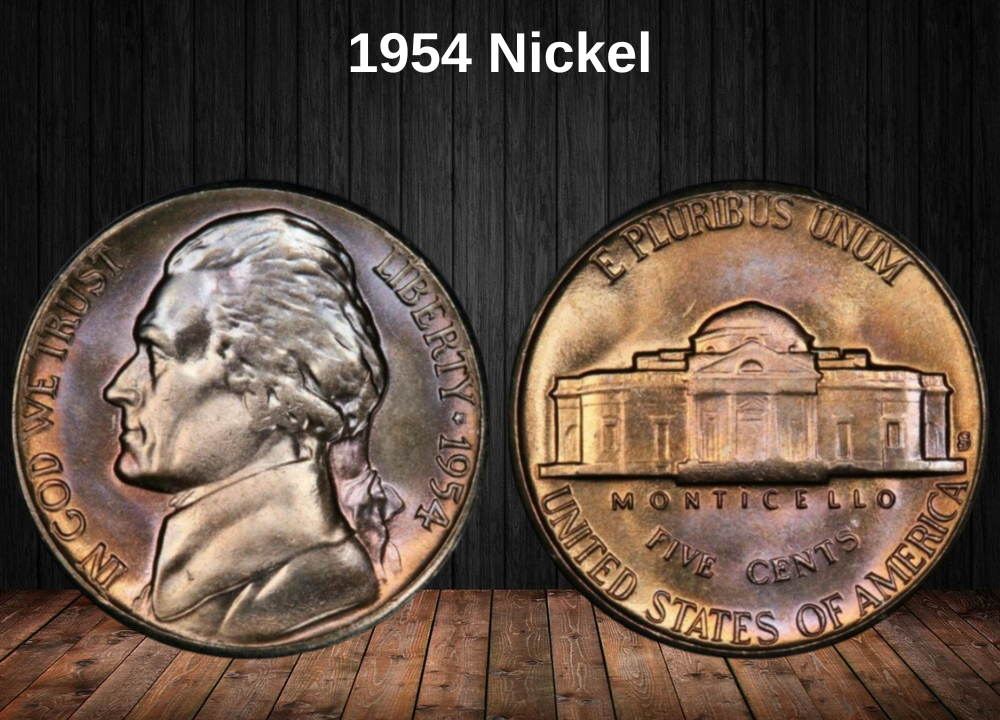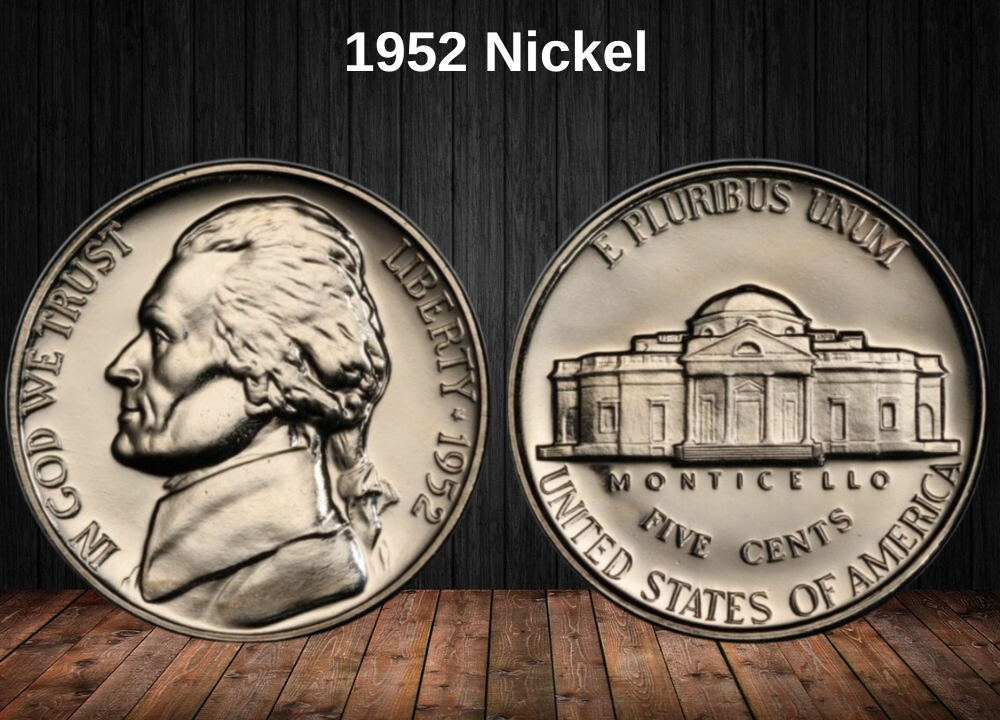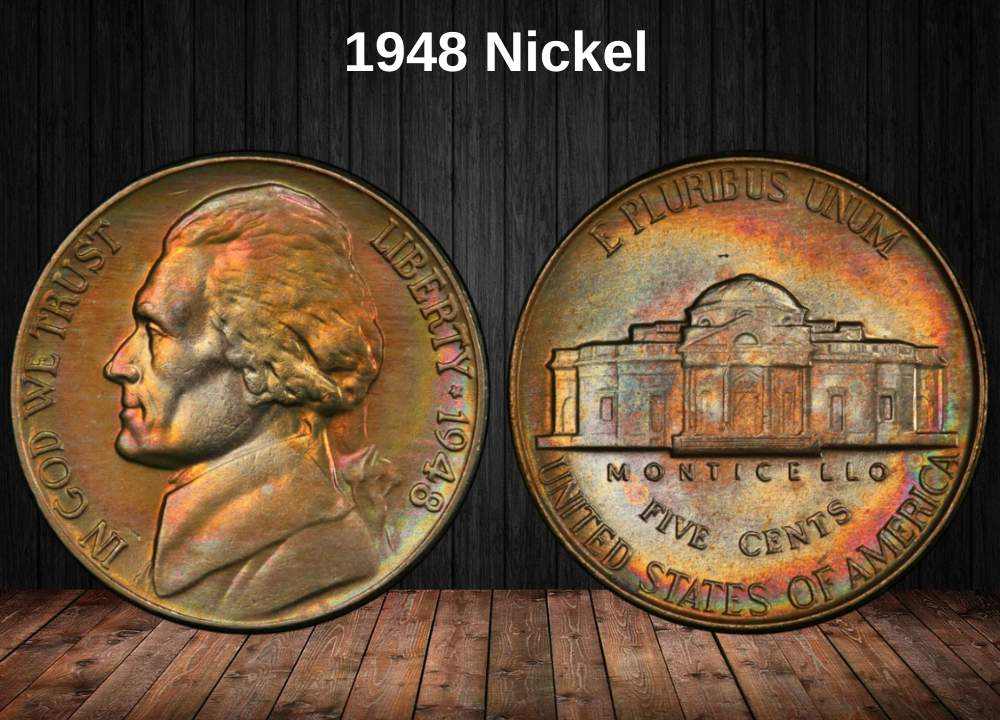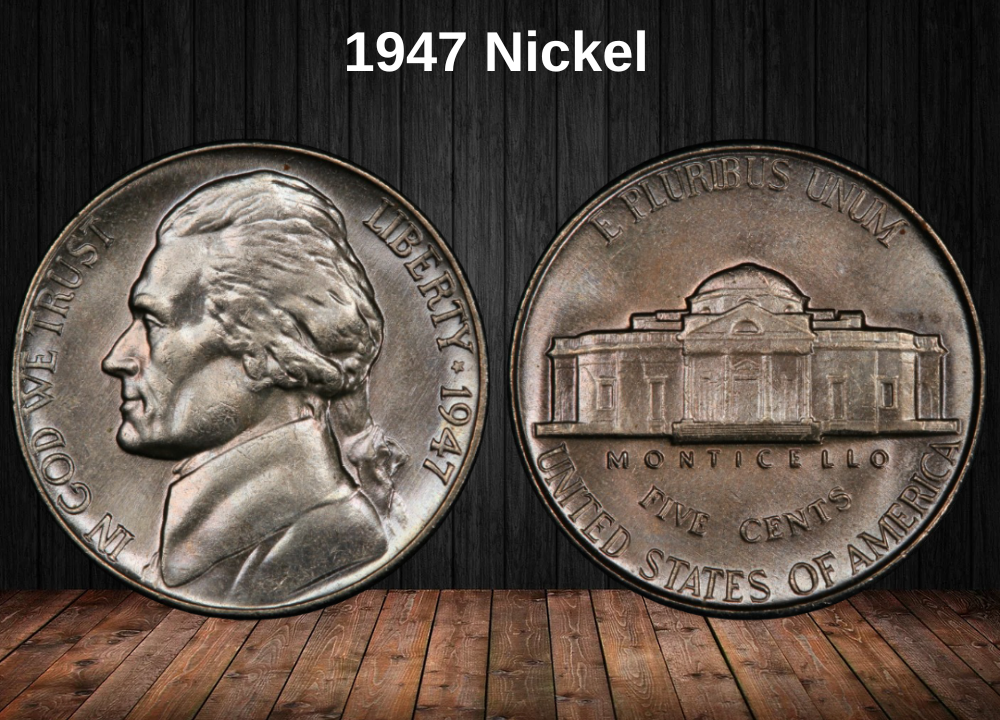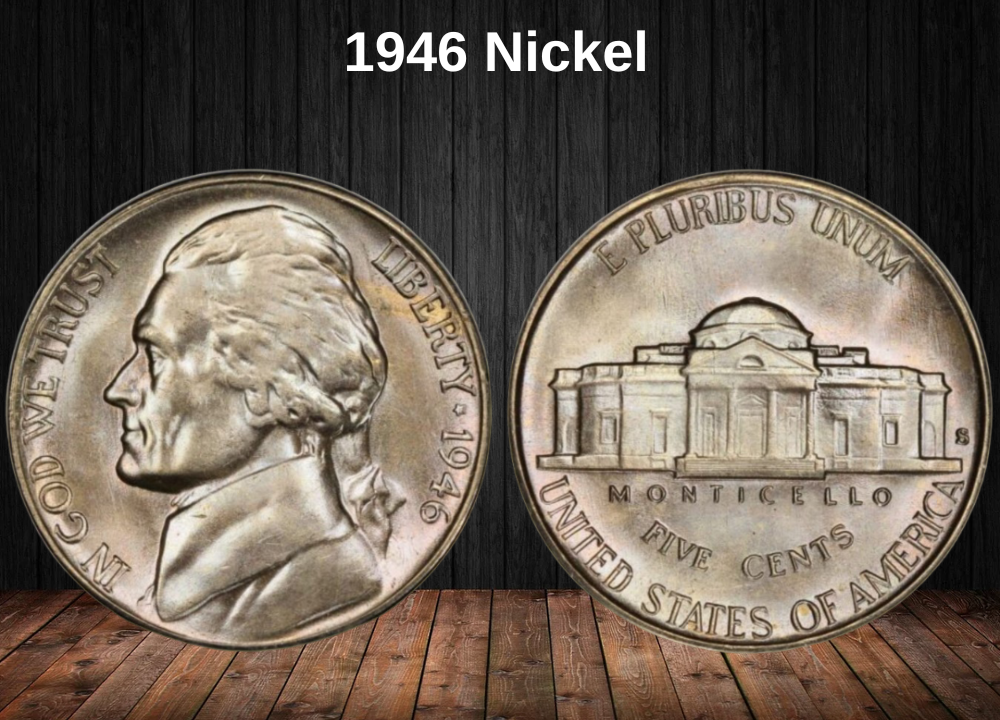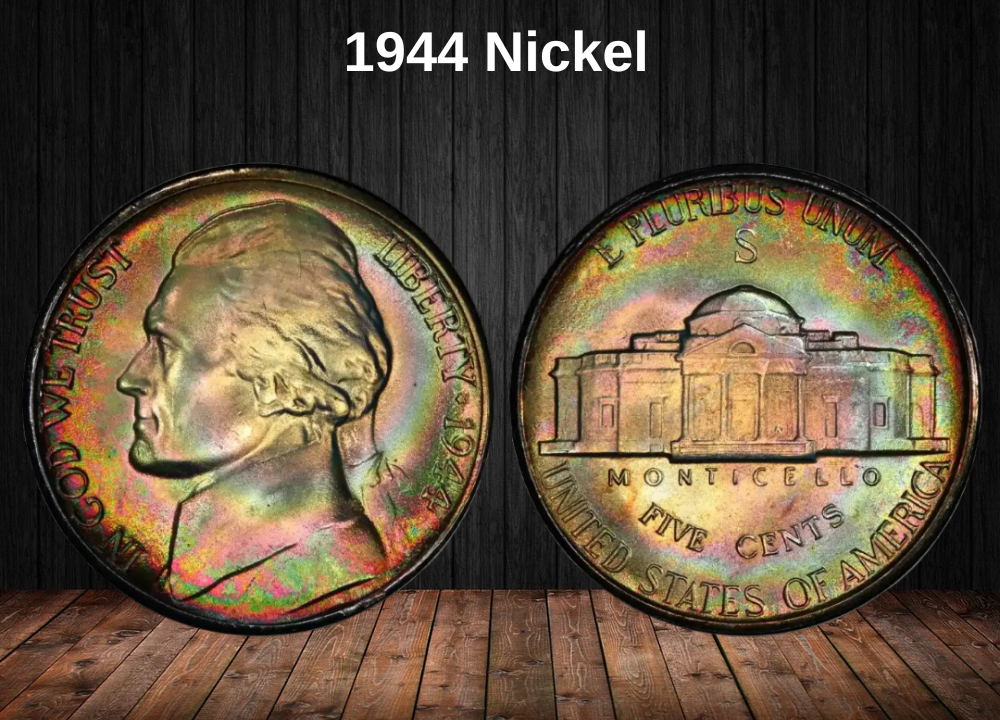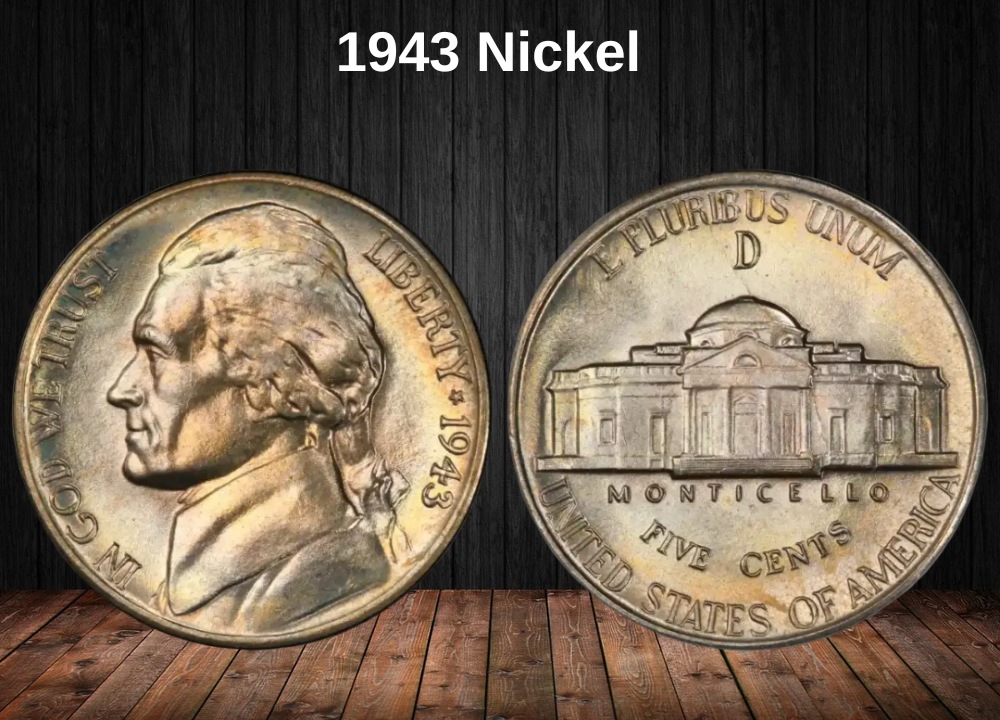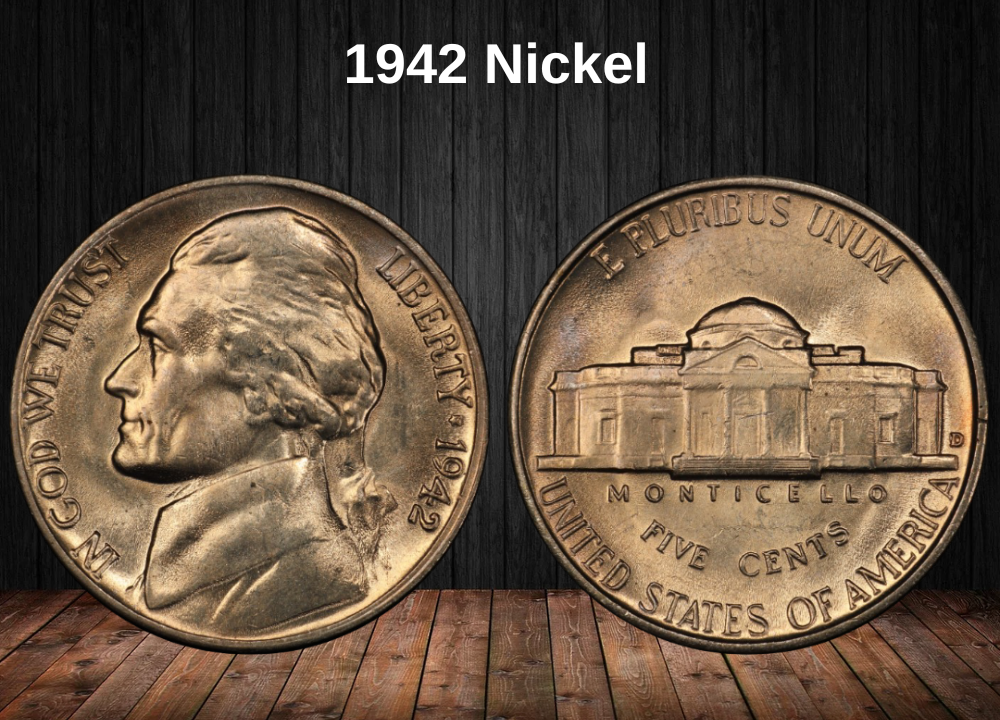The Buffalo Nickel series was first introduced by the U.S. Mint in 1913 and remained in production until 1938. Although these coins are highly sought after by collectors, the 1929 Buffalo Nickel — despite being nearly a century old — often carries only modest value in circulated condition.
That’s mainly due to the relatively high mintage numbers during that year, even though the United States was in the early years of the Great Depression. As a result, unless a 1929 nickel is in excellent, uncirculated condition, it typically won’t fetch high prices. However, coins in mint state can still command several thousand dollars, especially if they’re well-struck and graded by a trusted service.
Collectors also appreciate these coins for their historical context, as they were minted during one of the most difficult periods in American economic history.
1929 Buffalo Nickel Value Chart
| Condition | 1929 (No Mint Mark) | 1929-D | 1929-S |
|---|---|---|---|
| Good (G-4) | $1.53 | $1.53 | $1.53 |
| Very Good (VG-8) | $1.84 | $2.44 | $1.84 |
| Fine (F-12) | $3.01 | $3.01 | $2.44 |
| Very Fine (VF-20) | $6.11 | $8.45 | $4.85 |
| Extra Fine (EF-40) | $18 | $42 | $14 |
| About Uncirculated (AU-50) | $30 | $59 | $30 |
| Mint State 60 (MS-60) | $48 | $79 | $67 |
| Mint State 63 (MS-63) | $98 | $159 | $120 |
History of the 1929 Buffalo Nickels

The Buffalo Nickel, also known as the Indian Head Nickel, was designed by James Earle Fraser and first minted in 1913. Production continued until 1938, when it was replaced by the Jefferson Nickel. Fraser’s goal was to create a design that reflected America’s cultural identity, with strong imagery rooted in Native American heritage and the country’s natural landscape.
The very first batch of 40 Buffalo Nickels was specially minted as a symbolic gesture and presented to Native American Chiefs during the ceremonial laying of the cornerstone for the American Indian Memorial in New York. Sadly, the memorial was never completed, but those coins remain a powerful tribute.
1929 Buffalo Nickel Minting Numbers
Despite being struck during the Great Depression, the 1929 Buffalo Nickel had a large total mintage, exceeding 52 million coins across three U.S. Mints:
| Mint Location | Coin Type | Mintage |
|---|---|---|
| Philadelphia | 1929 (No Mint Mark) Nickel | 36,446,000 |
| San Francisco | 1929-S Nickel | 7,754,000 |
| Denver | 1929-D Nickel | 8,370,000 |
| — | Total | 52,570,000 |
Design Inspiration and Challenges
The obverse of the Buffalo Nickel features a composite portrait of a Native American man, which Fraser said was inspired by the features of three different tribal chiefs. On the reverse, the coin displays a majestic bison, believed to have been modeled after Black Diamond, a famous bison from the Central Park Zoo (formerly known as the Menagerie).
While the design was celebrated for its beauty and originality, it posed serious production challenges. The intricate details were too complex for the coin’s small surface area, and the high-relief elements wore down quickly in both circulation and die use. Mint workers struggled throughout the coin’s lifespan to maintain quality, even after making slight design adjustments.
Ultimately, the Buffalo Nickel was retired in 1938, with many at the Mint relieved to move on to a more practical and durable design — the Jefferson Nickel. Today, Buffalo Nickels, especially from sought-after years like 1929, are treasured by collectors for both their artistic value and historical significance.
Features of the 1929 Buffalo Nickels
The obverse of the 1929 Buffalo nickels
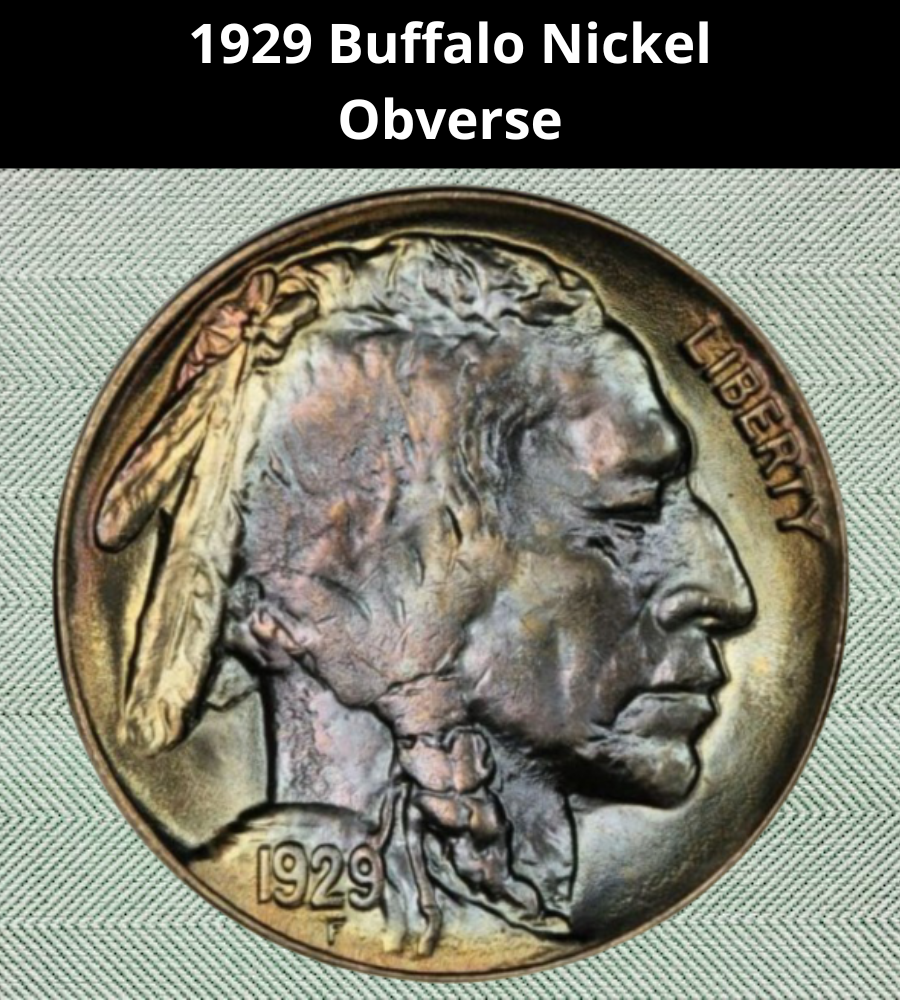
The obverse side of the 1929 Buffalo Nickel features a bold profile of a Native American man, taking up the majority of the coin’s center. The coin has a plain, smooth edge, giving it a clean border around the detailed central portrait.
The Native figure wears his hair in a mohawk-like style, with a braid running down the back of his neck, and three feathers tied into his hair — a detail clearly visible in most regular strike versions of the coin.
Designer James Earle Fraser noted that this image was a composite portrait, inspired by three different Native American chiefs: one from the Oglala Sioux, one from the Kiowa, and another from the Cheyenne tribes.
The word “LIBERTY” is inscribed along the right edge of the coin, just ahead of the figure’s face. The year “1929” is located near the lower left corner, just beneath the neck, and directly below the date is a small “F”, the sculptor’s initial, representing Fraser.
The reverse of the 1929 Buffalo nickels
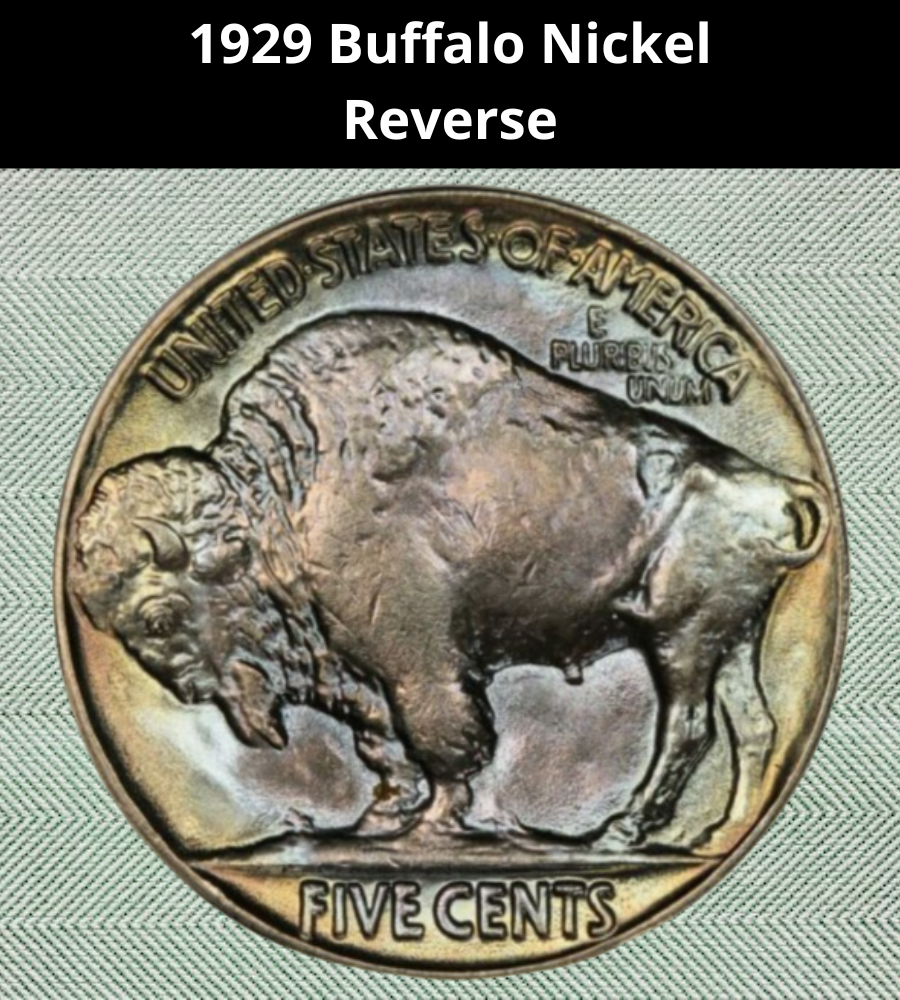
The reverse of the 1929 Buffalo Nickel proudly displays an American bison — often mistaken for a buffalo — shown in a side profile facing left. The bison stands with its head lowered, firmly planted on a stretch of ground, giving the design a strong and grounded appearance.
Across the top of the coin, the inscriptions “UNITED · STATES · OF · AMERICA” and the national motto “E PLURIBUS UNUM” are struck in capital letters. At the bottom of the reverse, the denomination is clearly stated as “FIVE CENTS”, and just above the lower rim, you’ll find the mint mark (if present), which identifies whether the coin was struck in Denver (D), San Francisco (S), or Philadelphia (no mark).
1929 Buffalo Nickel – Specifications
| Feature | Detail |
|---|---|
| Face Value | Five Cents ($0.05) |
| Shape | Round |
| Diameter | 21.21 mm (0.8350 inches) |
| Thickness | 1.95 mm (0.0768 inches) |
| Weight | 5 grams (0.1764 ounces) |
| Composition | Cupronickel (75% copper, 25% nickel) |
| Edge | Plain (no reeding) |
Other Features of the 1929 Buffalo Nickels
The 1929 Buffalo Nickels are round coins with a smooth, plain edge, consistent with all issues in the series. Each coin has a diameter of 21.21 mm (or 0.8350 inches) and weighs exactly 5 grams (approximately 0.1764 ounces).
These five-cent pieces were struck in cupronickel, an alloy made of 75% copper and 25% nickel, giving them both durability and a silvery appearance. If you were to measure one of these nickels, you’d find the thickness to be 1.95 mm (or 0.0768 inches) — a standard size for nickels of that period.
1929 Buffalo Nickel Grading
Grading plays a crucial role in determining the true value of a 1929 Buffalo Nickel. Collectors and appraisers assess each coin based on its overall appearance, including strike quality, surface preservation, original luster, and whether it has a mint mark.
Generally, coins that have remained in exceptional condition over time are far more valuable. On the other hand, those in heavily circulated or worn states still hold collector interest, but their market price is significantly lower. The minimum collectible grade is typically Good (G), though even lower grades may be of interest for rare varieties or errors.
Sheldon Grading Scale (Simplified)
| Grade # | Condition Description |
|---|---|
| 1 | Basal State (Poor) |
| 2 | Fair |
| 3 | Very Fair |
| 4–6 | Good |
| 7–10 | Very Good |
| 12–15 | Fine |
| 20–30 | Very Fine |
| 40 | Extremely Fine |
| 50 | About Uncirculated (AU) |
| 60 | Mint State (MS-60) |
| 65 | Mint State (Gem – MS-65) |
| 70 | Perfect Mint State (MS-70) |
To determine a coin’s exact worth, it’s essential to know its grade. Be sure to consult a reliable grading guide or get a professional evaluation from services like PCGS or NGC if you suspect your coin may be of high value.
1929 Buffalo Nickel Value Guides
1929 No Mint Mark Buffalo Nickels Value
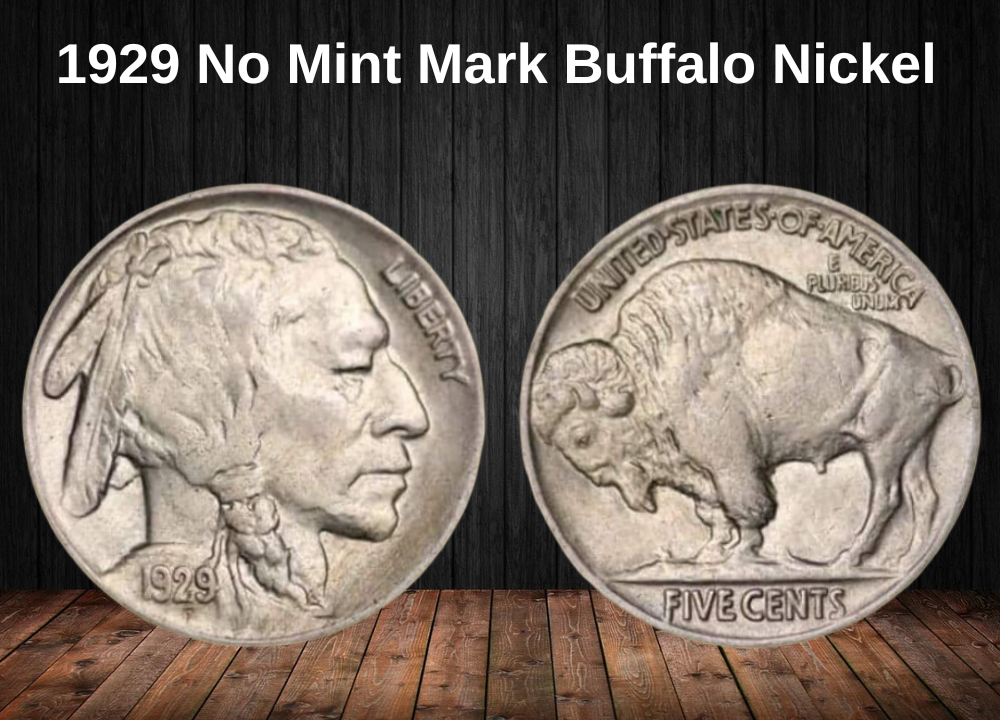
In 1929, the Philadelphia Mint struck a total of 36,446,000 Buffalo Nickels, making it the highest mintage of the year among all three U.S. Mints. The vast majority of these coins entered circulation, and most surviving examples today are found in lower grades. In worn condition, these coins typically sell for $1.46 to $28, depending on how much detail remains.
That said, collectors often seek uncirculated examples, which are far more valuable. The price of a 1929 no mint mark Buffalo Nickel in uncirculated condition depends on its grade, surface quality, and eye appeal. Here’s a general idea of what you can expect to pay:
| Grade | Estimated Value |
|---|---|
| MS-60 | $50 |
| MS-61 | $65 |
| MS-62 | $75 |
| MS-63 | $100 |
| MS-64 | $165 |
| MS-65 | $340 |
| MS-66 | $650 |
| MS-67 | $9,500 |
The true standout is the MS-67 specimen. Although coins at this grade are exceptionally rare, one example made headlines when it sold for an astonishing $63,250 at auction in 2005 — far exceeding expectations and proving just how much collectors are willing to pay for top-tier coins.
1929 D Buffalo nickels Value
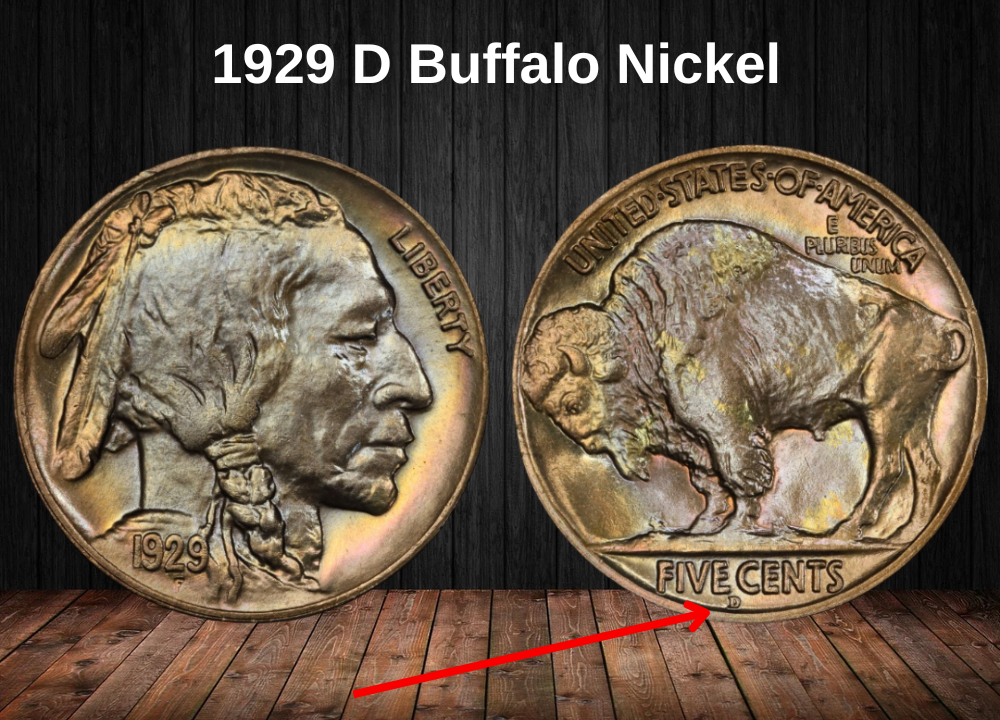
The Denver Mint produced 8,370,000 Buffalo Nickels in 1929. While this mintage was significantly lower than Philadelphia’s, most of these coins were heavily circulated, and their current value largely depends on how well they’ve been preserved.
In circulated grades, such as Good (G) to About Uncirculated (AU), a 1929-D Buffalo Nickel typically ranges in value from $1.46 to $57. These are common in collections and can often be found with moderate to heavy wear.
For collectors seeking coins in Mint State (MS) condition, prices start to climb:
| Grade | Estimated Value |
|---|---|
| MS-60 to MS-64 | $100 – $300 |
| MS-65 | $1,050 |
| MS-66 | $2,100 |
| MS-67 | $18,000+ |
The most remarkable sale recorded wasn’t even for an MS-67 coin. Instead, a 1929-D Buffalo Nickel graded MS-66+ fetched $15,275 at a Heritage Auctions event in 2014 — a testament to how rarity, eye appeal, and market demand can significantly influence auction results.
1929 S Buffalo nickels Value
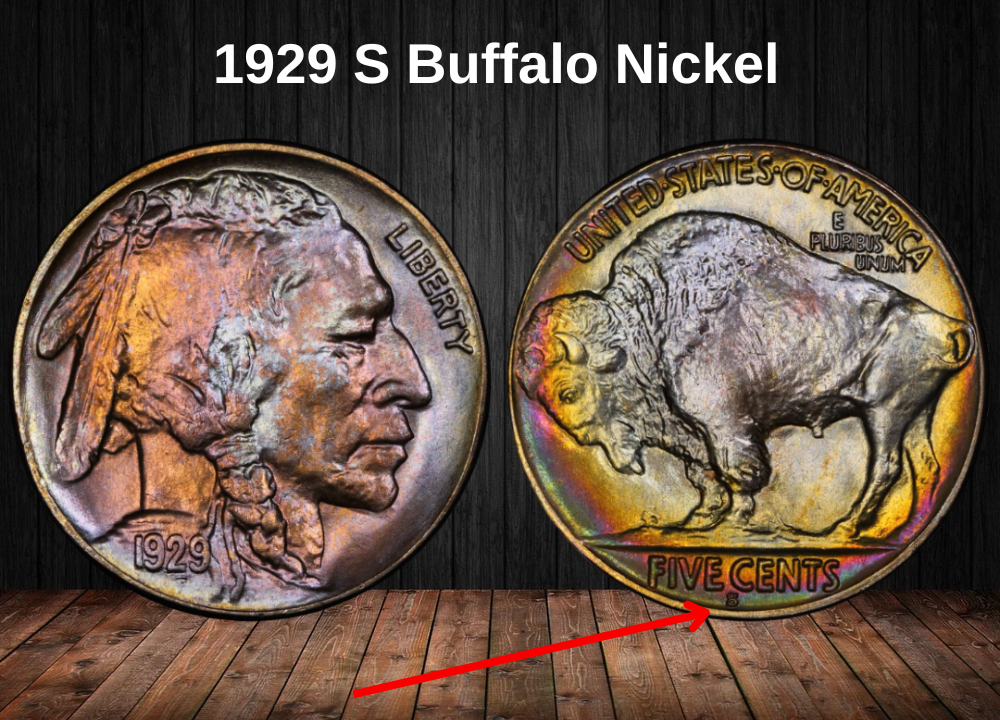
In 1929, the San Francisco Mint struck a total of 7,754,000 Buffalo Nickels, slightly fewer than Denver’s output that same year. Because of their relatively high survival rate in circulated condition, most 1929-S nickels are considered affordable in lower grades. You can typically buy one in Good to Very Fine condition for $1.46 to $28.
Coins that have been well-preserved over the decades carry a higher premium. Collectors can expect to pay anywhere from $38 to $690 for pieces graded MS-60 to MS-66, depending on their strike quality, surface appeal, and luster.
At the top of the market, MS-67 examples are valued at around $13,000, but coins in even better condition can command much more. In October 2021, a 1929-S Buffalo Nickel graded MS-67+ set an auction record when it sold for an impressive $36,000 — making it one of the most valuable coins of its type known to exist.
Rare 1929 Buffalo Nickel Errors List
Two feathers
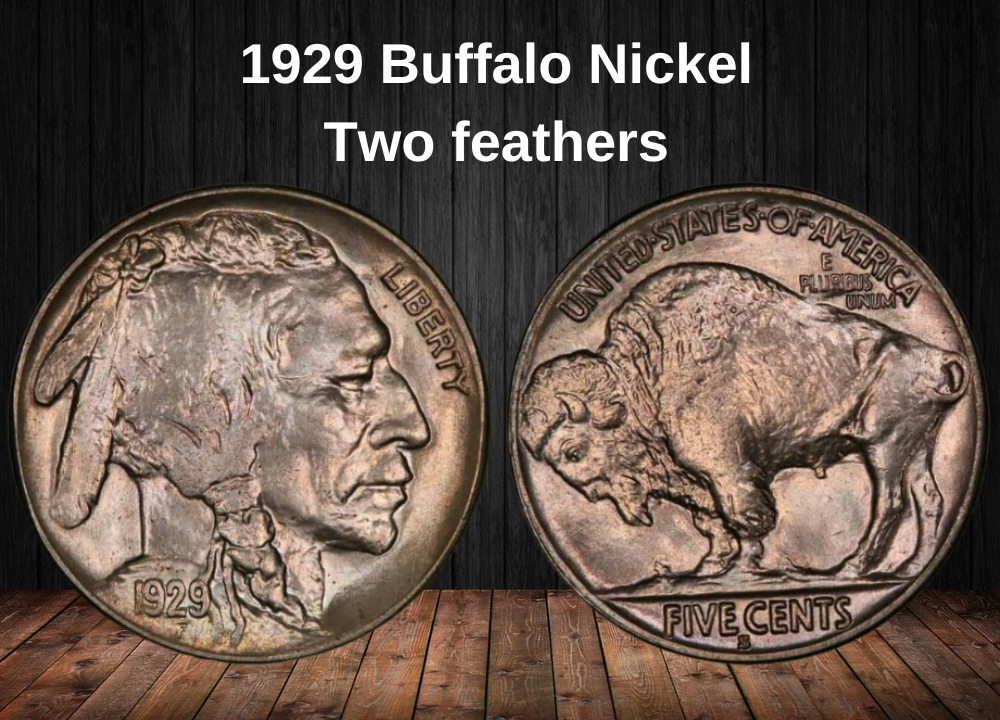
The Two Feathers error is a well-known and sought-after variety among Buffalo Nickel collectors. This error occurs when the third feather in the Native American’s headdress is accidentally removed during die polishing at the Mint. As a result, the portrait appears to have only two visible feathers, making the coin noticeably different from regular strikes.
These coins are considered scarce, especially in higher grades, and can attract strong interest at auction. One notable example — a 1929-S Buffalo Nickel with the Two Feathers error, graded MS-66 — achieved a record price of $11,750 in a 2019 auction, showing just how valuable this variety can be to collectors looking for standout pieces.
Off-center
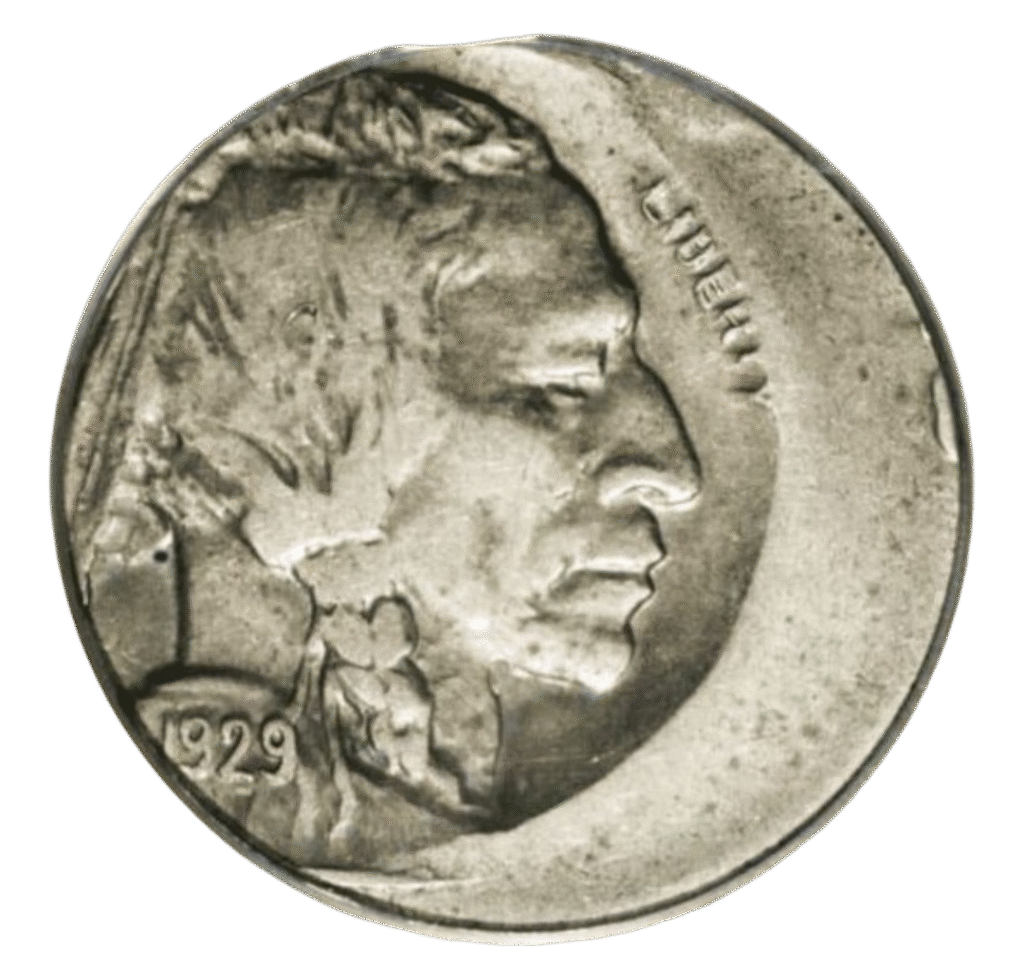
An off-center strike happens when the coin blank (planchet) is not properly aligned between the two dies during the minting process. This misalignment causes only part of the coin’s design to be stamped, leaving a blank, unstruck area on one or both sides. The size of this blank space typically varies from 5% up to 95% and usually appears in a distinctive crescent shape.
The value of an off-center Buffalo Nickel depends heavily on how much of the design is missing. Coins with a large unstruck area, especially if it obscures the date or major design elements, may be worth very little or even just face value. However, coins with a minor off-center error — around 20% off-center — can fetch prices close to $1,000. More dramatic errors, such as those with 40% off-center strikes, can command premiums exceeding $2,500 from collectors who prize their rarity and eye appeal.
Buffalo Nickels Struck on Wrong Planchets
Since the U.S. Mint often produced multiple coin types each year, it wasn’t unusual for a coin design to be mistakenly struck on a planchet intended for a different denomination. For example, a Buffalo Nickel might be struck on a smaller or larger blank that normally belongs to a dime, quarter, or another coin.
These wrong planchet errors are highly collectible due to their rarity and uniqueness. The value of such coins varies widely based on the type of planchet used, the coin’s condition, and eye appeal. Some of these error nickels have sold for several thousand dollars, making them prized additions to advanced collections.
Clipped and double-clipped planchet error
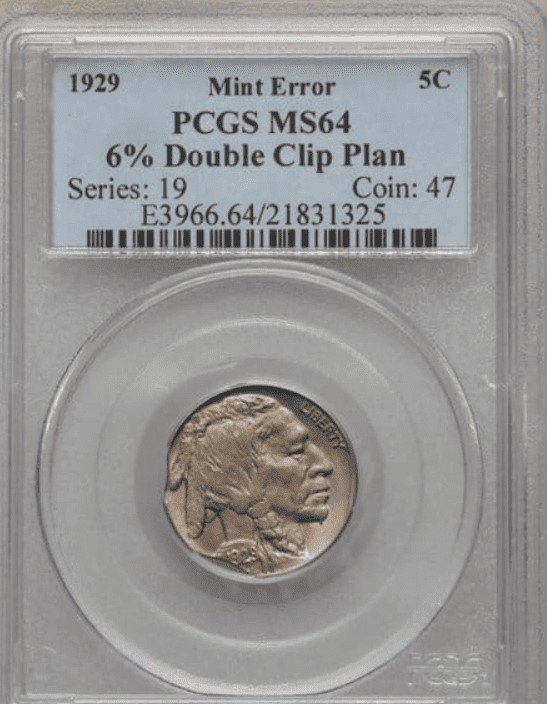
A clipped planchet error happens when the metal blank used to strike the coin is missing a portion of its edge before it is struck. This results in coins that have one or even two missing sections, known respectively as single or double clipped planchets. The missing areas can take on various shapes—curved, straight, or irregular—depending on how the blank was cut or torn.
The value of clipped planchet Buffalo Nickels depends largely on the size and visibility of the clipped area. Collectors especially prize coins with more dramatic or unusual clippings. At auctions, well-defined clipped planchet errors can fetch prices of up to around $250, reflecting their appeal as intriguing minting anomalies.
Doubled Die (DDO) Error
A doubled die error occurs during the die-making process when the design is accidentally impressed twice on the working die, causing a visible doubling effect on the struck coins. This doubling often appears on elements such as the date, letters, or other design details.
Most doubled die errors are subtle and require a magnifying glass or loupe to spot the slight doubling, though some are more pronounced. Collectors value these coins for their uniqueness, with typical prices ranging from about $130 to $600 depending on the severity and rarity of the doubling.
The highest recorded sale of a Buffalo Nickel with a doubled die error was in 2013, when one piece fetched $1,998 at auction, illustrating the premium such errors can command.
Lamination Error on 1929 Buffalo Nickels
A lamination error happens when the surface of the coin’s planchet develops a crack or flakes due to impurities or contamination in the metal during production. This defect causes unusual, distinct lines or peeling areas to appear on the coin’s surface, affecting either the obverse or reverse design.
While not extremely rare, coins with lamination errors are collectible and generally sell for around $60, depending on the size and visibility of the flaw.
Where to sell your nickel?
Now that you’re aware of your nickel’s value, you may be curious about the best places to sell it. Don’t worry: here’s a rundown of some top online marketplaces where you can conveniently sell your nickels, along with their benefits and drawbacks.
Explore the best platforms for selling nickels online (advantages and disadvantages).
FAQ about the 1929 Buffalo Nickels
1. How do variations in strike quality and die wear on 1929 Buffalo Nickels affect both their visual appeal and market value for collectors at different experience levels?
Strike quality and die wear significantly impact a coin’s detail and eye appeal. For beginners, a well-struck coin shows clearer design elements, making it more attractive and easier to grade. Advanced collectors also value subtle die states and strong strikes because these can indicate earlier die usage and higher rarity. Poor strikes or heavy die wear usually lower a coin’s market value, even if the coin is technically uncirculated.
2. What are the key indicators that distinguish genuine 1929 Buffalo Nickels from cleaned or artificially altered coins, especially for beginners?
Signs of cleaning include unnatural luster, fine scratches across the surface, and a lack of natural toning. Cleaned coins often look overly shiny or have an unnatural color. Beginners should look closely under good light and use a magnifier to spot these telltale signs. Genuine coins tend to have consistent surface texture and natural aging, which helps maintain their collector value.
3. How do mint mark repunching and doubled die errors manifest on 1929 Buffalo Nickels, and why are these varieties particularly sought after by collectors?
Mint mark repunching appears as a secondary, slightly offset or shadowed mint mark below or beside the primary one. Doubled die errors show doubling on date numerals or letters, visible as a “shadow” effect. These anomalies are sought because they are relatively rare minting mistakes that tell a story about the minting process, and collectors prize them as unique variations that can carry a premium.
4. In what ways does the economic and historical context of 1929, including the onset of the Great Depression, influence the rarity and preservation of Buffalo Nickels from that year?
The Great Depression began in late 1929, causing economic hardship that affected coin circulation and saving habits. Many coins were heavily circulated, reducing survival rates of high-grade specimens. Fewer people saved coins as collectibles during that era, so well-preserved 1929 Buffalo Nickels are scarcer today. This historical context adds depth and value to surviving high-quality coins.
5. What techniques can novice collectors use to safely store and preserve 1929 Buffalo Nickels to maintain their condition and value over time?
Novices should store coins in acid-free holders, like Mylar flips or hard plastic cases, avoiding PVC materials that can damage coins. Coins should be kept in a cool, dry environment with low humidity and away from direct sunlight. Handling coins by the edges and using gloves or clean hands reduces oils and dirt transfer, preserving surface quality.
6. How can the study of die progression and minting processes deepen a collector’s understanding of 1929 Buffalo Nickels and improve their ability to identify rare varieties?
Studying die progression helps collectors recognize changes in die wear, cracks, and polishing marks that occur as dies age. This knowledge allows for more precise attribution of coins to specific die states or varieties. Understanding minting processes sheds light on why certain errors occur and enhances appreciation for subtle differences, improving a collector’s skill in identifying and valuing rare 1929 Buffalo Nickels.
7. How do auction results and collector demand for 1929 Buffalo Nickels reflect broader trends in numismatic interest and investment potential for early 20th-century coins?
Auction data shows steady demand for 1929 Buffalo Nickels, especially for high-grade and error varieties. This reflects growing interest in early 20th-century U.S. coinage as both collectibles and investment assets. Market trends indicate that well-preserved and unique coins from this period tend to appreciate over time, driven by collector enthusiasm and limited supply.

